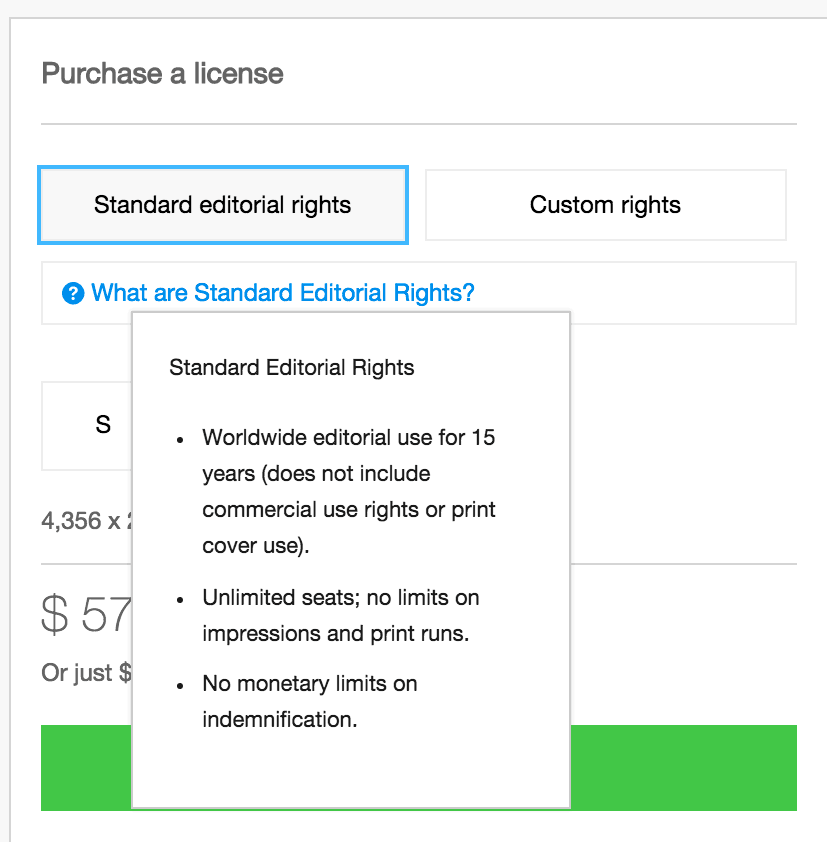Share
Did Your Editorial Client Ask for Perpetual Usage?
This post is a part of our on-going look at pricing photography. The Brief NY documentary photographer Dorie Hagler recently posed a question in an...

This post is a part of our on-going look at pricing photography.
The Brief
NY documentary photographer Dorie Hagler recently posed a question in an online forum, “What is the current thought on online magazines wanting images in perpetuity? I am hearing lots of debate of opinions about how to charge for that. I’d love to hear some more thoughts.” The photographer had been approached by both a university publication and a major news organization to license her photos.
How Would You Handle It?
We asked 3 photographers about the issue.
Peter Yang, Los Angeles, CA
Web use has always been in perpetuity as far as I’ve known. This stems from the days (like 15+ years ago) where web use was just an afterthought. Now I can find stuff I shot over a decade ago that’s still online. In many ways, it seems way more valuable than print usage which is just one time. It’s something that’s been on my mind on and off for a while, but magazines aren’t exactly rolling in money, so I don’t really act on anything.
Todd Bigelow, Los Angeles, CA
Typically speaking, yes, the editorial clients are asking for perpetual use “online.” Mostly because online is also an archive, so to limit the duration from a specific assignment means telling the publication that after a year or two they have to go and remove the image from their archived story. In my opinion, that’s unrealistic. However, there are some important things to keep in mind.
First, “online” use is too vague a term in this day of multiple platform electronic distribution. I always make sure that the contract for my clients spells out that the images can be used with the story on the assigning publications website “in the original context” only. That means the publication can’t use the images to accompany a different story on their website without paying.
Clients also like to use the images on social media and can consider this as “online” use if the term is not otherwise defined. Again, it would be unrealistic to impose a limited duration and make a client go into their social media feed a year later and remove the image. More importantly, photographers should make sure that a publications social media use is defined as in it’s original context. In other words, the IG, FB, Twitter, Snapchat and other feeds are HUGE for publications, so it’s important that any use on social media platforms outside of the original context is defined as an additional use and subject to secondary licensing fees. Hypothetically speaking, if I shoot a PGA tour event for a sports publication and they run a story on Jordan Spieth, great, it can go out on social media in the story’s original context. But if the same publication runs a different story later and wants to use one of the images from my shoot, they should pay a licensing fee for that use since it’s not the original context. After all, they’re publishing it to a million IG or Twitter followers, so photographers need to see that in the same way we see website and/or print distribution. Social media is not a small, ancillary use.
Gary He, New York, NY
It’s important to have a conversation with your clients about usage before any pricing is agreed upon. In the corporate and commercial event game, clients generally understand that pricing covers a one year license with limits to the scope of usage. If social isn’t a line item, it’s assumed to be included at this point, so price accordingly.
One thing to note, however, is that there are major wire services playing in the corporate and commercial event space that have work for hire contracts with their less educated photographers, which in turn allows them to offer more favorable licensing terms (perpetual use?? who does this??) to commercial clients than an independent photographer would normally allow at a certain price point. How do you compete with that? You either concede the licensing terms or you concede the job. Don’t feel bad if you need to do the former—this environment was not your fault, isn’t going to change anytime soon, they want independent photographers to guilt each other into oblivion, you need to pay rent, etc.
What a Photo Editor Says
Dustin Drankoski, Photo Director, Mashable
Mashable’s contract is written so that we have perpetual use of imagery shot for us, or provided by a photographer. It really comes down to the fact that going back after 90 days (or six months or one year) to remove imagery from articles is logistically impractical.
For the sake of clarity though, I want to point out that Mashable’s contract stipulates perpetual usage not perpetual rights. After a 30-day embargo from when the images have been published on our site, all of the rights and permissions revert back to the photographer. They are free to license and sell the images to whomever they want. We’re not looking to own the rights to an image, only make sure the stories we create with them will always live on.
All of Mashable’s social media platforms are included in the contract as well. In the current media landscape publishers have to be able to push stories where people are looking to read them.
We do have very explicit language in the contract stating the imagery will only be used in conjunction with the story it was originally photographed for. The last thing I want is for us to be taking imagery out of context and giving it new meaning without the photographer’s consent. It also allows us a way to keep an open relationship with a photographer. For example: if we use a picture in an editorial story and later decide it would work really well for another story we go back pay them for a second usage (with their permission of course).
Editors and photographers should know exactly what is at stake and how imagery will be used by the publisher.
According to Getty Images
Getty Images’ “Standard Editorial Rights” include worldwide editorial use for 15-years, after which time, Getty presumably comes back and asks for more money. If you build a custom license, you can get, for example, “Perpetual archival rights in original context” for Social Media use, or usage on a “Commercial Blog” grants up to 5 years of use.
Getty’s approach is somewhat scattershot on the issue of long-term use. On the one hand, their Standard Editorial Rights grants 15 years of use. But their $49 “Editorial use of web-res file” has a 3-month duration.
What Did the Photographer Do?
For the university publication, Hagler provided an estimate the following estimate:
One image for print magazine up to 1/4 page = $350 (circulation of 60,000)
Five images for the gallery for up to two years =$2000
Five images for the gallery in perpetuity = $3500
The university accepted the print price and declined the web galleries.
For the news publication, Hagler asked for $800 for a 12 image gallery of a personal project. They counter-offered $500 for a 10 image gallery, which she accepted. “I included usage in perpetuity because it is actually beneficial to have that link and media coverage online.”
This brings up an interesting point about the value of a link. In Search Engine Optimization terms having a link from a well-ranked website can be incredibly beneficial to how your website appears in search rankings. Although it might be hard to quantify, there is real economic value in having higher search rankings.
Additional Notes
Perpetual usage is the de facto for online editorial publishing. Limiting secondary use is also important (and was a bone of contention with the new TIME Inc. contract) – you should to be able to re-license your content within the same organization as this has historically been a steady revenue source for editorial photographers.
Although rare, some publications, like The New York Times, claim joint copyright for any images produced under their freelance work-for-hire contract. This means that the entire notion of assigning a license is moot because they co-own the content and can use it in any context. Yet another reason why the $200 assignment rate should give photographers some pause.
While it may be both unrealistic and impractical to constrain publishing duration in an online world, it is still very important to limit image usage to the original intent – particularly when the potential to use an editorial image in a questionably commercial context exists(e.g. Your image repurposed for a subscription ad unit).
Responses have been edited and condensed.
Dorie Hagler will be teaching a series of seminars at Adorama in June 2016 called “Let Me Save You the Trouble,” covering a range of photo business topics.
Update 5/18/16: Added the photographer’s response



